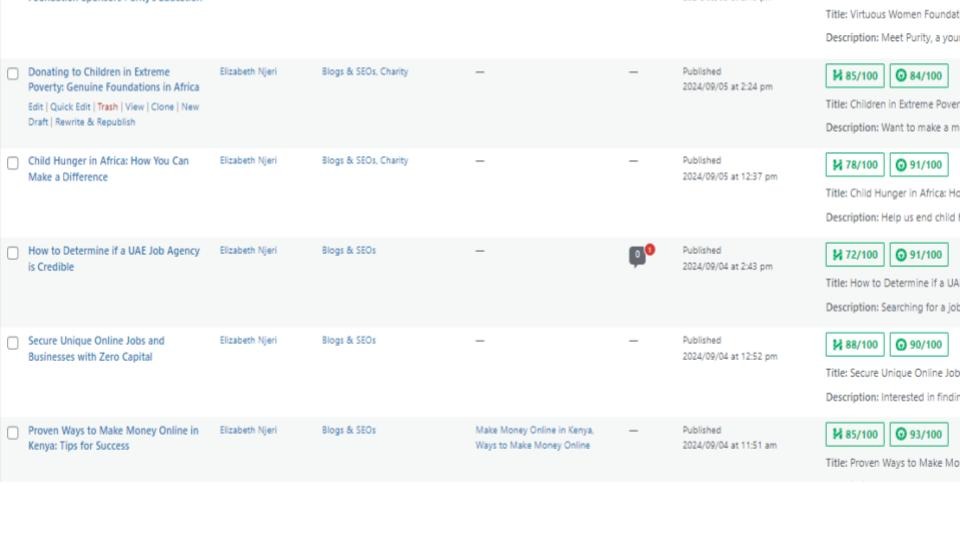
Posts Optimization Sample1
Each blog post is optimized with SEO-friendly titles and meta descriptions, making it easier for search engines to index the content and for readers to find the information they need.
For example, a post on "Understanding Tax Laws for Small Businesses" may have a title such as "Navigating Tax Laws: A Guide for Small Business Owners." The post's meta description would read "Learn about important tax laws and regulations that small business owners should be aware of in order to avoid legal disputes and penalties."
The meta description includes relevant keywords and provides a clear summary of what the post will cover, enticing readers to click and learn more.

The standard metrics that qualifies a well-optimized post include:
- Keyword density: ensuring that relevant keywords appear naturally throughout the content without overstuffing, which can lead to penalization by search engines.
- Readability: using a clear, concise writing style that is easy to understand for the target audience, incorporating bullet points or lists where necessary to break up text and improve comprehension.
- Internal and external links: including links to other relevant posts or external authoritative sources to provide additional context and value, as well as to enhance the content’s SEO performance.
- Mobile optimization: ensuring that each post is responsive and displays correctly on various devices, offering a seamless user experience for readers accessing the content on smartphones or tablets.
By adhering to these optimization standards, businesses can enhance their online visibility, ensuring that potential clients or readers find the necessary information swiftly and easily.
Lorem ipsum dolor sit amet, consectetur adipiscing elit, sed do eiusmod tempor incididunt ut labore et dolore magna aliqua.
Post a comment